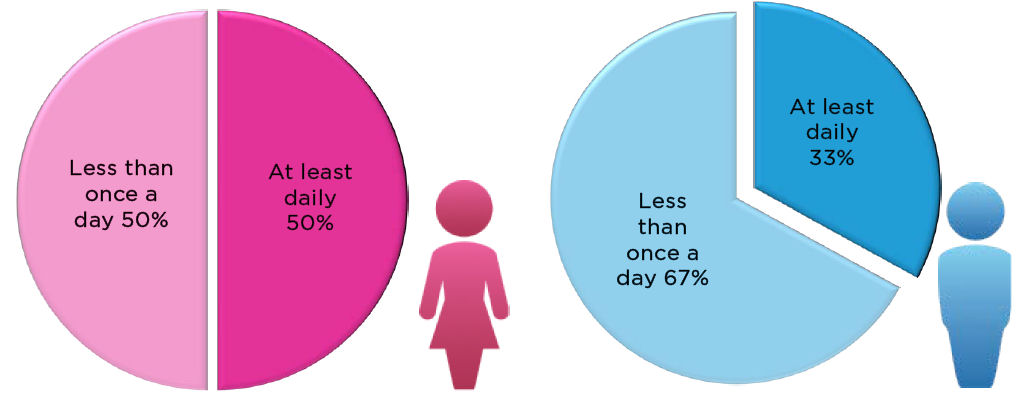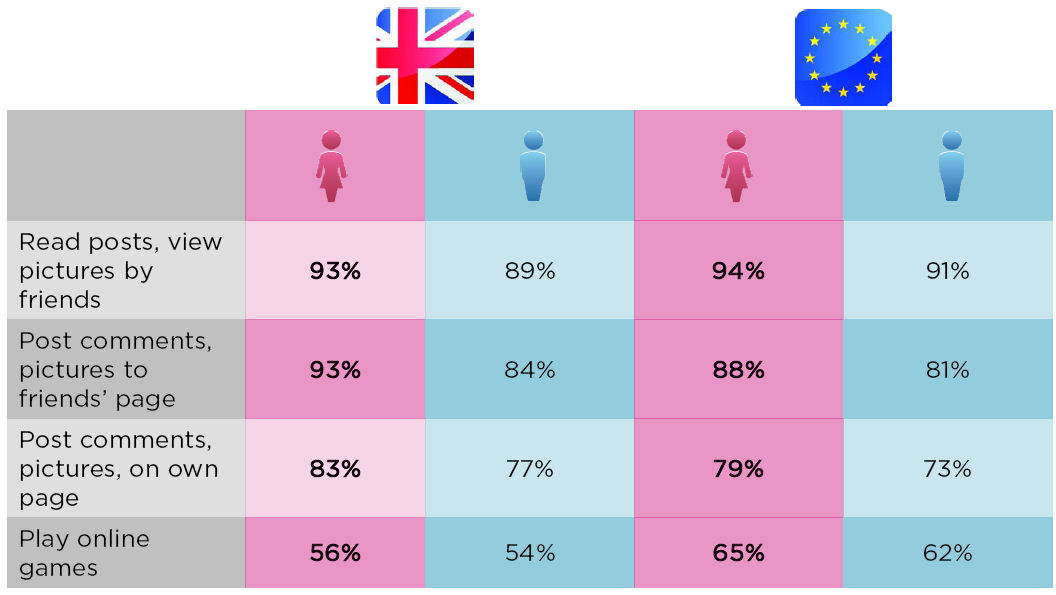The prevalence of social media in our lives means that many of us are always “on”, frequently communicating online wherever we happen to be. This may suggest that social media has changed the amount we interact with others, but it could also mean that we simply interact differently. Melissa Taylor, director of planning at PR firm Porter Novelli.asks: “It’s the classic chicken and egg question – has social media made people more social, or is it amplifying an innate trait?“
Women access social media more frequently

Source: EuroPN Styles - Men are from Foursquare, Women are from Facebook, Porter Novelli
Whether or not social media has made people more social, the good news for PROs is that it offers them another way to engage consumers. It is vital to communicate effectively, which means understanding how individuals prefer to receive information. Before you tailor your messages, you should first consider whether your audience is predominately male or female, as men and women communicate differently. Taylor says: “I’ve always been fascinated by the differences in how men and women communicate, and what motivates their communication. Deborah Tannen, the popular gender communications writer, posits that women’s interactions are driven primarily by a desire to make connections. Women share in order to find common ground and strengthen relationships; whereas men’s conversations are more status-driven. For them, it’s more about one-upmanship and establishing yourself in the hierarchy. Take this premise into the social media space and you find the same dynamic.”
Why do women go onto social media?

Source: EuroPN Styles - Men are from Foursquare, Women are from Facebook, Porter Novelli
Taylor’s views on communicating to men and women have been informed by data from Porter Novelli’s recent EuroPNStyles study, that showed that women tend to be more active in social media and access it more frequently than men. Discussing men and women’s different motivations for using sites like Facebook, Taylors says: “Women are more likely than men to share pictures, posts and comments with their social networks. On the flip side, men are generally the ones driving usage of Foursquare and Twitter – where it’s more about saying where you are and what you are doing, without the interaction and validation you find in a more community-oriented site like Facebook.”
Taylor also refers to global research and advisory firm Forrester’s Social Technographics data, which she says reveals that communication among men online is more linear or competitive and women participate in communities, share information, and engage in conversation.
Discussing how importance of studying how men and women interact online for the PR industry, Taylor concludes: “It is not enough to know how to ‘do digital’ for its own sake. We still need to understand people and what influences them whatever the medium. In this new era of marketing, brands will achieve most success if they combine social media savvy with human insights.”
Methodology
EuroPN Styles is an annual survey of more than 10,000 European consumers commissioned by Porter Novelli. Data from this survey informed a Porter Noveilli report called Men are from Foursquare, Women are from Facebook that looked at the differences between men and women using social media.
PR Masterclass: The Intersection of PR and GEO
Join PRmoment for a Masterclass featuring 10 of the industry’s foremost experts. You will walk away with a clear, actionable strategy for adapting your content to an AI-first search environment.
Taking place on Wednesday 25th February in London, both virtual and in person tickets are available.
Early bird ticket sale ends Friday 9 January.
PR MasterclassIf you enjoyed this article, sign up for free to our twice weekly editorial alert.
We have six email alerts in total - covering ESG, internal comms, PR jobs and events. Enter your email address below to find out more:









